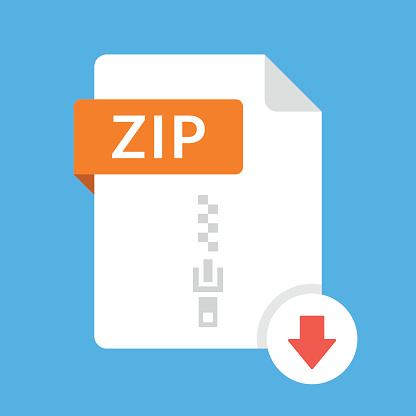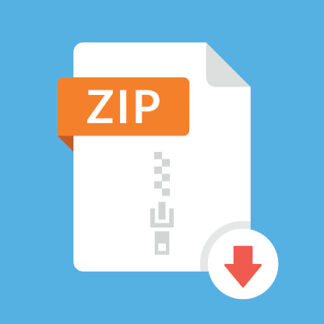Description
You are to write parts of an E-Commerce System Simulator program. An Ecommerce system
(like Amazon) sells various types of products to registered customers. Customers order a
product they like, and the system ships it to them. The system must keep track of all its
products, all its registered customers, all current orders and all shipped orders.
This programming assignment will increase your knowledge of array lists, objects and
classes, inheritance, and interfaces. You must do this assignment alone – no groups. Do
not attempt to find source code on the web for this assignment. It will not help you and
you risk extremely serious consequences. Your program will be checked for plagiarism.
Begin designing and programming early! This assignment is worth 10 percent of your mark.
If there is some part of the assignment you do not understand, please contact Prof.
McInerney or Prof. Valenzano (via email or ask during lectures) and we will clarify the
issue.
NOTE: some parts of the assignment are using java concepts we have not yet studied (e.g.
inheritance, interface Comparable and interface Comparator, the use of the super
keyword). These topics will be covered in detail in the two weeks after the break. You
may want to wait until these topics are covered before writing the part of the system
that uses them. However, we greatly encourage you to start the parts that you can as soon
as possible.
Skeleton code has been provided for you. This code compiles and runs! It defines the Java
classes for you and your job is to basically fill in the methods for these classes. In
addition, two of the basic system actions have been written for you: PRODS and NEWCUST.
We suggest you begin by examining the code and understand how the flow of execution works
for these two actions. Use print statements. Start in ECommerceUserInterface.java and see
how it calls the methods in ECommerceSystem.java and how the Ecommerce system uses the
support classes (e.g. Product, Customer etc.). Then, begin by implementing the simpler
actions (see the marking scheme at the end of this document and use it as a guide. Also
use the video as a guide). That is, write the code necessary to get a single action
completely working (compiled, debugged and tested). Then move on to the next action. This
way of “growing” your code piece by piece will minimize bugs and allow you to always have
a working system to submit – even if you have not finished some of the more difficult
actions. NOTE: if you submit code that does not compile, you are eligible for at most 1
or perhaps 2 marks out of 10.
Program Functionality Requirements:
Please view the video included with this assignment. Below is a description of the
classes for your assignment and list of methods and variables. NOTE: We have posted
skeleton code for you of all the necessary classes. Some of these classes are complete,
most are not. You are to fill in code for the methods according to the instructions below
and according to the comments in the skeleton code for each class. This makes the
assignment much easier to mark for the TAs and ensures you are adhering to proper Object
Oriented design.
Look at the constructor method of ECommerceSystem.java and you will see that we have
created a list of 10 or so products as well as a list of 4 customers. Please do not
change or add to these as they will be used for marking!! Please look closely at the
skeleton code and comments within. For this first assignment, you should always strive to
use the methods outlined in the skeleton code rather than creating your own. In other
words, we are controlling the overall design in this assignment. You are permitted to add
supporting methods and other instance variables if you deem it necessary. Here is the
list of classes you are to modify:
1. Product: class Product contains several instance variables (see the skeleton code)
to model a product: Product ID, name, type, price and product options. For example
a name might be “Acer Laptop”. The ID (a string) is generated by the system (e.g.
“913”). The options are a string that is used when a product is ordered (e.g.
Paperback book vs Hardcover). There are different categories of Products (e.g.
computers, books, clothing). This class has been completed for you.
2. Customer: class Customer models a registered Ecommerce customer. It contains the
customer name, and ID (a string generated by the system) and a shipping address.
Almost all the code for this class has been written for you. You are to make class
Customer implement the Comparable interface – see the skeleton code for comments.
Note: this functionality is not needed except for the SORTCUST action – you may
want to wait until we have studied Java interfaces before tackling this part.
3. ProductOrder: class ProductOrder stores the order of a product by a customer. It
contains an orderNumber (a string generated by the system), a reference to the
product object ordered and a reference to the customer object. It also stores any
product options associated with this product (e.g. for Books, the options contain
“Paperback” or “Hardcover” etc) that were entered by the user. This class has been
written for you.
4. Book: class Book is a subclass of Product. It also stores additional information
(author, title). A book maybe in one of 3 formats: “Paperback”, “Hardcover”,
“EBook”. It also has additional variables to store the number of hardcover books in
stock for this book, the number of paperbacks, and has an essentially infinite
number of EBook copies. For this reason the get/set/reduce stockCount methods must
be overridden to appropriately use the given productOptions so that the specific
stock counts can be affected by setStockCount() and reduceStockCount(). The print()
method must also be overridden such that the basic product information is printed
(HINT: use the super keyword) as well as the additional information title and
author. See the video.
5. ECommerceSystem: this class contains the bulk of the logic for the system. It
maintains an array list of Product objects, Customer objects, ProductOrder objects
and ProductOrder objects that have been shipped. Some of the methods have been
written for you. Fill in the code for the other methods based on the comments. The
constructor method has been written for you and Product and Customer objects have
been created for you and added to the appropriate lists.
6. ECommerceUserInterface: This class has the main() method and is the user
interaction part. Some skeleton code has been provided for you with some comments.
In a while loop, a scanner reads a line of input from the user. The input lines
contain words (Strings). The first word is the action (e.g. custs, prods). Some
actions require parameters. The code should prompt the user by print out what
parameter should be entered. See the video and look at the example code provided
for you for action NEWCUST. Fill in the code based on the comments for all the
other actions.
7. Design a subclass Shoes that is a special type of Product with some specific
options. The user should be able to buy a pair of shoes that have sizes 6, 7, 8, 9,
10 and possible colors black or brown. Examine class Books to see how it overrides
the various stockCount() methods inherited from class Product by using the
productOptions string – which is set when the user orders a book and specifies the
format (e.g. PaperBack). You also will need to create a new action ORDERSHOES in
ECommerceUserInterface where the user can specify size and color and this
information is stored in a single productOptions string.
8. BONUS: Add an integer year variable (representing year published) to class Book.
Create a new action called “BooksByAuthor” in class ECommerceUserInterface that
specifies an author name. Add code to class ECommerceSystem and class Book such
that all books by the given author are printed in increasing order of year
published. Use proper OO design.
Grading (Out of 10 marks)
Highest Grade Possible: 11
Basic: actions CUSTS, BOOKS,
ORDERS, SHIPPED
3 marks
Intermediate: actions ORDER, SHIP,
CUSTORDERS, NEWCUST, CANCEL
4 marks
Advanced: Action ORDERBOOK and
class Book functionality
1 mark
Advanced: action ORDERSHOES and
class Shoes
1 mark
3 SORT actions (see code) 1 mark
BooksByAuthor action implemented
using proper OO design
1 mark
Penalty for insufficient comments
or bad program structure or bad use
of inheritance and interfaces
Up to -1 marks
Submitting Your Assignment: READ CAREFULLY!!
• Inside each of your “.java” files have your name and student id as comments at the
top of the file. Make sure your files can be compiled as is without any further
modification!! Try compiling on a command line using javac.
• Include a README.txt file that describes what aspects of your program works and
what does not work (or partially works). If your program does not compile, state
this!! You may still get 1 or 2 (out of 10) part marks. The TA will use this README
file as a guide and make fewer marking mistakes.
• Place all your “.java” file(s) and README.txt file into an archive (zip or rar
archiving format only).
• Open your archive and make sure your all your files are there.
• Do not include “.class” files!!!!
• Do not use any Package keyword in your java files!!!
• Once everything is ready, submit it to D2L.



